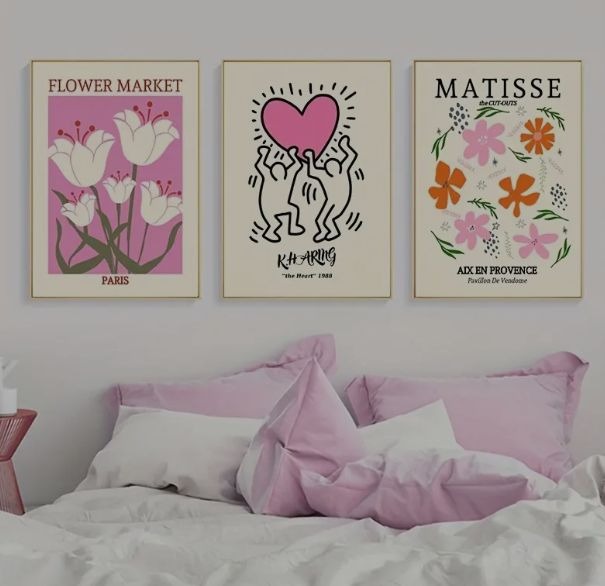
The Definitive Canvas Art Chronicles: A Far-Reaching Treatise
May 15, 2025
The Ultimate Canvas Art Compendium: An Unparalleled Odyssean Treatise
May 15, 2025Prologue
Canvas art persists as a pinnacle of human creativity and technical mastery, uniting centuries-old traditions with avant-garde innovations. This magisterial compendium stretches beyond prior treatments, offering unparalleled depth. We voyage through multidisciplinary chapters: the genesis of canvas media; fiber science and substrate engineering; pigments, binders, and fine art materials; stylistic evolutions from classical realism to digital hybrids; sociocultural impacts and critical theory; environmental ethics and regenerative practices; conservation science; global art economies; pedagogy and community engagement; technological frontiers; and prognostications of canvas art’s trajectory. Each section teems with case studies, comparative analyses, and thematic explorations worthy of scholarly reference.
Origins and Material Science
Early Surfaces and the Advent of Canvas Before canvas, human expression adorned caves, frescoed walls, and wooden panels. Canvas arose in the Mediterranean trade routes, its linen weave offering unparalleled portability and resilience for maritime and nomadic contexts. By the Renaissance, pivot figures like Giovanni Bellini espoused canvas for altarpieces, cementing its dominance.
Fiber Chemistry and Weave Engineering Linen and cotton canvases exhibit distinct crystalline cellulose arrangements influencing tensile strength and dimensional stability. Warp and weft tension calibrations during weaving yield variations in thread count, surface bore, and absorbency. Modern research integrates nanocellulose coatings to modulate porosity and adhesion.
Custom Substrates: Innovations Beyond Flax and Cotton Alternative fibers—ramie, hemp, bamboo—enter the repertoire, each with unique microfibril properties. Synthetic mesophase fibers base on polyethylene terephthalate (PET) blends maintain archival integrity under extreme humidity. Composite substrates merge metallic threads for conductive art installations.
Surface Preparation and Priming Methodologies Traditional rabbit-skin glue sizing counters capillary action but invites biological degradation. Acrylic emulsion sizing replaces organic binders for pH neutrality. Gesso formulas evolve to include calcium carbonate and titanium dioxide differential loads, optimizing opacity and impasto support.
Orders of Painting Technique
Historical Methodologies: From Grisaille to Glazing Medieval icon painters began with monochromatic underlayers defining form. Venetian masters perfected glazing sequences—transparent oil layers—to attain luminescence. Comparative pigment analysis reveals shifts from lead white to titanium variants, each altering refractive indices.
Modern and Postmodern Experimentation Abstract Expressionists like Franz Kline and Helen Frankenthaler challenged surface conventions, applying diluted acrylics in soak-stain techniques. Contemporary practitioners integrate mixed media: embedding archival photographs, industrial enamels, and phosphorescent powders for multisensory experiences.
Digital Hybrids and Print-Finish Synthesis High-resolution inkjet canvas prints undergo UV-curable resin sealing. Artists then intervene manually with oil and cold wax mediums, creating one-of-a-kind hand-finished editions. Augmented reality triggers layered animations when viewed through custom apps.
Stylistic Movements and Cultural Theory
Baroque Emotion and Romantic Sublimity Baroque dramatists provoked catharsis through tenebrism and monumental scale. Romantic canvases communicated nature’s transcendental power—evident in Turner’s tempestuous seascapes.
Realism, Impressionism, and Post-Impressionism Transition Courbet’s earthy palette and Millais’s pre-Raphaelite detail diverged from man-made narrativity. The Impressionists harnessed broken color to capture fleeting light, while Post-Impressionists like Van Gogh imposed emotive brushwork.
Modernism, Pop, and Street Art Confluence Picasso’s cubist deconstructions reframed spatial perception. Warhol’s screen-printed canvases critiqued consumerism. Contemporary street artists transition murals onto canvas, preserving urban ephemerality.
Critical Discourse: Canvas as Ideological Arena Semiotic analysis interprets canvases as signifying systems. Feminist interventions repurpose archival portraits on canvas to challenge representation. Postcolonial critiques reveal canvas art’s role in power dynamics and cultural hegemony.
Sustainability and Regenerative Frameworks
Life Cycle Assessment: Quantifying Footprints Quantitative metrics track water consumption, carbon emissions, and VOC output per square meter of primed canvas. Comparative LCA highlights hemp’s lower environmental burden versus cotton.
Regenerative Sourcing and Closed-Loop Models Agroforestry-integrated flax cultivation rebuilds soil health. Producers employ cradle-to-cradle certification, ensuring spent canvases re-enter fiber cycles via enzymatic depolymerization.
Green Chemistry in Art Materials Waterborne acrylic dispersions replace solvent-based mediums. Bio-based binders derived from canola oil esters offer non-toxic alternatives. Recyclable packaging for stretcher bars and frames reduces plastic waste.
Conservation Science and Preventive Measures
Advanced Diagnostics: Multispectral Imaging and Microfade Testing Conservators utilize hyperspectral cameras to map pigment degradation pathways. Microfade spectrometry predicts light-induced color shifts, guiding display protocols.
In Situ Stabilization and Reversibility Principles Ethical conservation upholds minimal intervention. Paraloid B72 consolidates flaking paint; Beva 371 film adheres canvas splits. All treatments are designed for future reversibility.
Community and Education
Pedagogical Models: Atelier vs. Academic Master-apprentice atelier systems sustain craft continuity. University programs integrate art history, material science, and digital fabrication labs, producing hybrid specialists.
Outreach: Public Workshops and Digital Learning Nonprofit collectives host mural-to-canvas workshops, democratizing technique. MOOCs deliver tutorials on priming, painting, and printing, expanding global practice.
Market Dynamics and Global Trade
Primary Market: Galleries, Biennales, and Art Fairs Flagship events like Art Basel and Venice Biennale set benchmarks. Pricing indices correlate artist reputation, exhibition history, and gallery representation.
Secondary Market: Auctions and Private Sales Auction databases track hammer prices, offering predictive analytics for investment. Private sales increasingly rely on virtual viewing rooms and NFT-provenanced tokens.
Emerging E-Commerce and Print-on-Demand Platforms Art marketplaces such as Saatchi Art and Artsy streamline logistic chains. Print-on-demand services empower micro-collections with minimal overhead.
Legal and Ethical Dimensions
Copyright, Reproduction Rights, and Moral Rights Canvas art inhabits complex IP frameworks: Artists retain moral rights even after sale. Licensing agreements govern print reproductions, royalty structures, and digital rights management.
Cultural Heritage and Repatriation Debates Historic canvases become focal points in repatriation claims. International UNESCO conventions and national laws mediate cross-border artwork movements.
Technological Frontiers
Smart Textiles and Interactive Canvases Conductive inks establish touch-sensitive canvases triggering embedded speakers. Shape-memory polymers alter canvas tension in response to humidity.
Virtual and Mixed Reality Environments VR installations allow users to scale and manipulate canvases in digital galleries. Blockchain-secured provenance records reside within immersive exhibitions.
Synthetic Biology and Biofabricated Canvases Genetically engineered bacterial cellulose yields transparent substrates. Mycelium-based panels offer biodegradable yet robust alternatives.
Prognosis and Visionary Trajectories
Cross-Disciplinary Collaborations Artists join forces with neuroscientists, translating brainwaves into canvas compositions. Data-visualization art depicts climate models in layered pigment analyses.
Digital Authenticity and Tokenization NFT-linked canvases guarantee uniqueness in print editions. Smart contracts automate resale royalties, reshaping artist compensation.
Ethical Futures and Inclusive Practices Decolonizing canvas narratives ensures marginalized voices shape the medium. Community-based art councils fund free access to materials and exhibition spaces.
Epilogue
This compendium has traversed the entire spectrum of canvas art—its scientific underpinnings, historical transformations, aesthetic revolutions, social functions, and ecological responsibilities. The canvas, ever malleable, continues to absorb the imprint of human ingenuity. As we propel into a future where the material and digital converge, canvas art stands at the nexus of continuity and metamorphosis, ready to reflect the next chapters of our collective imagination.


